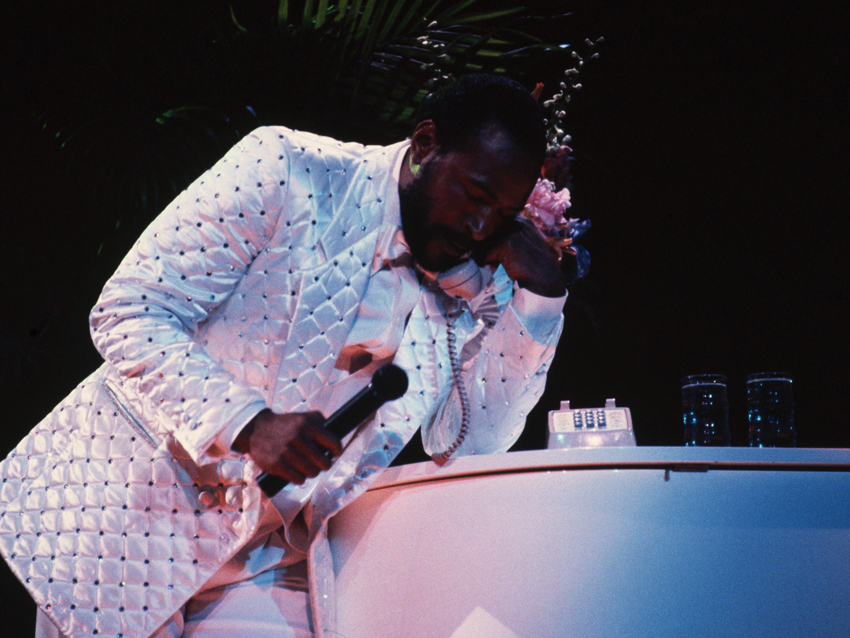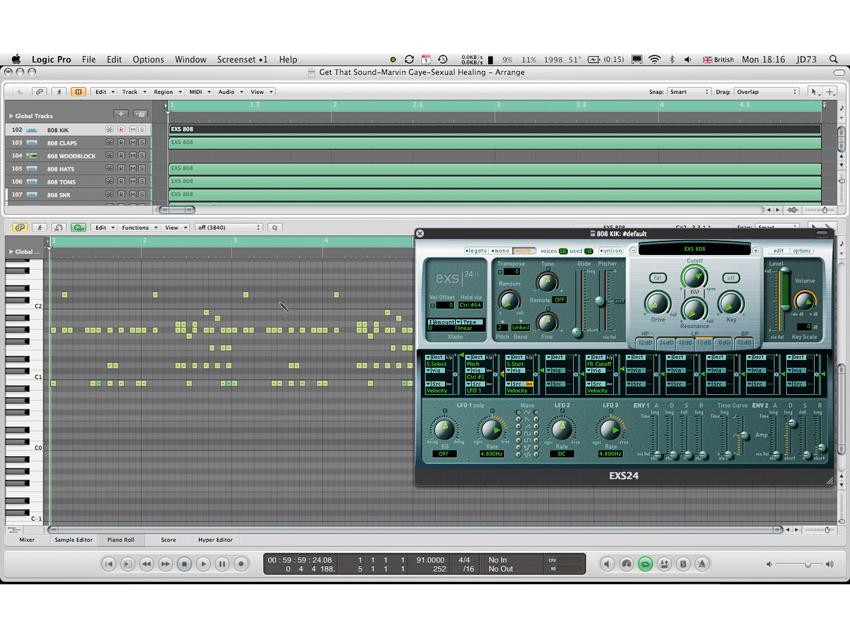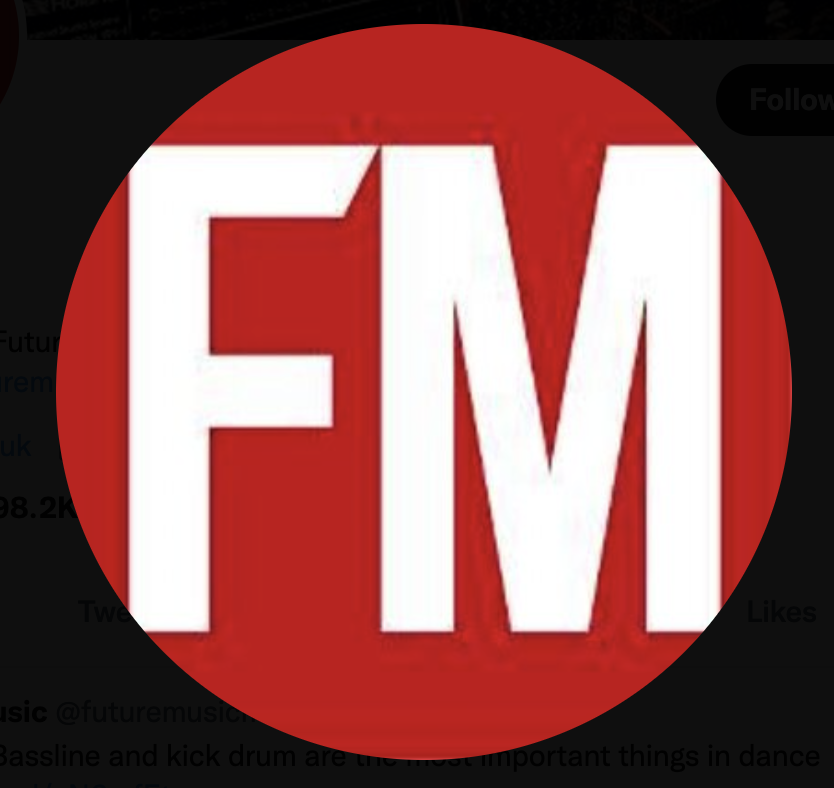Get the groove of Marvin Gaye's Sexual Healing

Intro
Here we're recreating Marvin Gaye's 1982 electronic Soul ballad Sexual Healing using Logic.
Central to the groove is the Roland TR-808 drum machine – in fact, rumour has it that this was one of the first commercial hits to utilise the 808. Though the beat and groove sound simple, there’s a lot of syncopation so it’s essential to study the original beat. Try importing the track and slowing down the drum-only intro using Logic’s varispeed feature.

EXS-808
Let’s load up all the various plug-ins that are needed to recreate the main four-bar groove.
We need five instances of the EXS24 plug-in running the default factory EXS 808 kit for the kick, snare, claps, hats and toms, plus Motu BPM to play the woodblock part, as Logic’s 808 kit doesn’t include the classic 808 woodblock.
We’ve added an Averb to the hats, too, and panned them to the right. Start by programming the beat with all parts together on one track, while referencing the original. Then copy that part to the other four tracks containing the instances of the EXS24 with the 808 kit. Mute out the other parts so that you have a kick on one track, a snare on the next and so on. This allows you to process all the elements independently.

Groove on
Work on the velocities of the hats, snare and kick to make them groove more naturally, and once you’re happy, start processing using your favourite compression, EQ and reverb plug-ins.
We’ve added quite a long reverb to the claps using Audio Damage’s Reverence plug-in, plus compression to bring up the reverb tail. Add subtle compression and reverb as necessary to the other parts in the mix while referring back to the original track’s mix to make sure you’re in the right ballpark. Subtle processing is the name of the game here – just adding a tiny amount of short reverb will really bring the sounds to life.

Adding the other instruments
Now it’s time to add the other instruments into the mix. Again, use varispeed to help you transcribe the instrumental parts from the original.
There are three guitar parts, all using stock factory EXS guitar sounds – a mute part down the middle of the mix, a Reggae-ish skank to the left and a simple part on beats two and four to the right.
The chord scheme is B flat major, C minor, A flat major, E flat major. Try a bit of subtle compression, short reverbs and some EQ to remove unwanted lows and brighten the sounds, plus a little high-mid boost to help the guitars cut through. Using the enveloper plug-in helps to boost the attack transients and shape the decay of the left and right parts. We’ve also thrown in the guitar amp plug-in on the right-hand part to dirty up the sound, and added some quite severe panning to help de-clutter the guitar parts and separate them from each other.

Adding the bass
For the bass part we’ve used Logic’s ES1 plug-in set at 4’ pitch with a saw and step wave; this is blended together using the 24dB fat filter with low filter cutoff and resonance.
We’ve added the C1 Chorus in ES1 to get closer to the sound on the original. For the Rhodes part we’ve used the default EVP88 preset following the same rhythm as the bass part, with some subtle chorusing to give it more animation. Finally, on the overall mix we’ve used a short, bright reverb, the Waves MPX tape emulator to glue the mix together and Logic’s limiter for loudness.
Future Music is the number one magazine for today's producers. Packed with technique and technology we'll help you make great new music. All-access artist interviews, in-depth gear reviews, essential production tutorials and much more. Every marvellous monthly edition features reliable reviews of the latest and greatest hardware and software technology and techniques, unparalleled advice, in-depth interviews, sensational free samples and so much more to improve the experience and outcome of your music-making.
